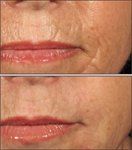- General Dermatology
- Eczema
- Chronic Hand Eczema
- Alopecia
- Aesthetics
- Vitiligo
- COVID-19
- Actinic Keratosis
- Precision Medicine and Biologics
- Rare Disease
- Wound Care
- Rosacea
- Psoriasis
- Psoriatic Arthritis
- Atopic Dermatitis
- Melasma
- NP and PA
- Skin Cancer
- Hidradenitis Suppurativa
- Drug Watch
- Pigmentary Disorders
- Acne
- Pediatric Dermatology
- Practice Management
- Prurigo Nodularis
Article
Fillers with lidocaine ease injection sting
Approved by the Food and Drug Administration, a number of fillers containing lidocaine hit the market this spring and are quickly coming into fairly widespread use. Arielle Kauvar, M.D., director of the New York Laser & Skin Care Center, says she started using them in March, and unless a patient is allergic to lidocaine, she sees no reason now to use fillers without the anesthetic already included.

Key Points
New York - Approved by the Food and Drug Administration, a number of fillers containing lidocaine hit the market this spring and are quickly coming into fairly widespread use.

Dr. Kauvar says that using the fillers with lidocaine can take some getting used to, however - perhaps even more so for the doctor with more experience injecting fillers.
Take it slow

"If you do that quickly, however, as an experienced injector can, the lidocaine will not have had time to take effect.
"If you're moving along quickly, the treatment area 2 mm away or 5 mm away will not be anesthetized yet. It actually takes several minutes for the lidocaine from the first injection to help anesthetize the area. The patient will definitely feel that first injection. Although, as with fillers in general, if it is injected slowly, it always hurts less," she says.
"There are definitely tricks to placing the injected material, so you can return to the area around the first injection site and have some anesthetic in the surrounding area," Dr. Kauvar says.
Placement planning
Dr. Kauvar, a clinical associate professor at New York University School of Medicine, New York, provides a couple of suggestions for initial placement of the injections.
"If you're injecting the nasolabial fold, it helps to inject some at the pyriform aperture," she says. "You can first inject 0.05 to 0.1 ml in the pyriform aperture, and this will allow you to inject the nasolabial fold with significantly less pain. Similarly, if you are also injecting the lips, first inject 0.05 ml in at the oral commissure.
"You can then return to injecting from the base of the pyriform aperture, in a retrograde fashion down the nasolabial fold," Dr. Kauvar says. "That way, you will be injecting into areas that have already developed some anesthesia. Similarly, after the anesthetic effect has set in at the oral commissure, you can inject in a medial direction along the vermillion as the zone of anesthesia advances."
Dr. Kauvar notes that following an injection, it can take a "good five minutes" before a 5 mm to 10 mm area is anesthetized, and she says it's relatively easy to outstrip the anesthetic capabilities of the fillers with lidocaine.
"On the lips, if you start injecting in the oral commissure, you can advance so that you're going from a place that's anesthetized to one that is not. You want to plan a bit, so you're not sitting around having to wait for the lidocaine to take effect, either.
"You can inject a couple of boluses in areas where it's important to get some anesthetic," Dr. Kauvar says. "Then, if you're doing another procedure on the patient, such as botulinum toxin, you administer the botulinum toxin, then go back and those original areas will be somewhat anesthetized. It takes some planning, however, because it's not instantaneous anesthesia with injection."





